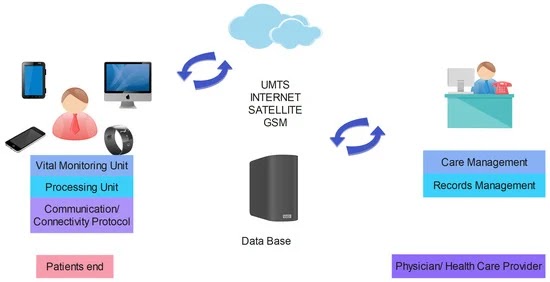Introduction
Telemedicine, a branch of medicine that utilizes telecommunications technology to provide healthcare services remotely, has seen remarkable advancements in recent years. This article will delve into the latest technologies and developments in telemedicine, exploring how it is transforming healthcare delivery, improving patient access, and addressing challenges.
Transforming Healthcare Delivery
Advancements in telemedicine have revolutionized healthcare delivery by bridging the gap between healthcare providers and patients, regardless of geographical distances. With the help of video conferencing, patients can now consult with doctors remotely, reducing the need for physical visits, particularly in areas with limited medical access.
Moreover, telemedicine facilitates real-time communication between healthcare professionals, enabling them to collaborate and exchange critical information for accurate diagnoses and treatment plans. This instant connectivity ensures timely interventions, especially in emergency situations where every second counts.
Additionally, telemedicine has paved the way for remote patient monitoring. It allows healthcare providers to remotely monitor patients with chronic conditions, such as diabetes or hypertension, through the use of connected devices. This not only improves patient outcomes but also reduces hospital readmissions and healthcare costs.
Improving Patient Access
One of the primary advantages of telemedicine is its ability to improve patient access to healthcare services. By eliminating the need for in-person visits, telemedicine expands the reach of medical specialists to patients in rural areas or those restricted by mobility issues.
Furthermore, telemedicine allows patients to schedule appointments more conveniently, reducing waiting times and saving both time and money associated with travel expenses. Patients can now receive expert medical advice from the comfort of their homes, enabling early detection and prevention of diseases.
In recent years, telemedicine has also become a valuable tool in providing mental healthcare services. Through telepsychiatry, individuals can access mental health professionals for therapy sessions or consultations, overcoming the barriers of stigma and geographical limitations. This has greatly improved the accessibility and availability of mental healthcare for many individuals.
Addressing Challenges
While telemedicine offers numerous benefits, it does come with a unique set of challenges that need to be addressed for its widespread adoption. One such challenge is ensuring patient privacy and data security during remote consultations. Healthcare providers must adhere to strict protocols and implement robust encryption measures to protect sensitive patient information.
Another challenge is the need for reliable internet connectivity, as telemedicine heavily relies on seamless communication between patients and healthcare professionals. Efforts are being made to improve internet accessibility in remote areas, but further advancements are needed to bridge the digital divide.
Furthermore, issues related to insurance coverage and reimbursement policies need to be resolved to encourage healthcare providers to adopt telemedicine on a larger scale. Policymakers and insurance companies must work together to create policies that recognize and reimburse telemedicine services adequately.
Lastly, there is a need for continued research and development to improve the technology and usability of telemedicine platforms. This includes advancements in user-friendly interfaces, integration with electronic health records, and interoperability between different telemedicine systems.
Conclusion
Advancements in telemedicine have revolutionized healthcare delivery, making it more accessible and convenient for patients. With the continuous development of technologies, telemedicine is set to transform the future of healthcare by improving patient outcomes and reducing the burden on traditional healthcare systems. However, addressing challenges such as privacy concerns, internet connectivity issues, insurance coverage, and technology improvements are crucial to ensure the successful integration of telemedicine into mainstream healthcare practices. By overcoming these challenges, telemedicine has the potential to improve healthcare access and outcomes for individuals worldwide.

